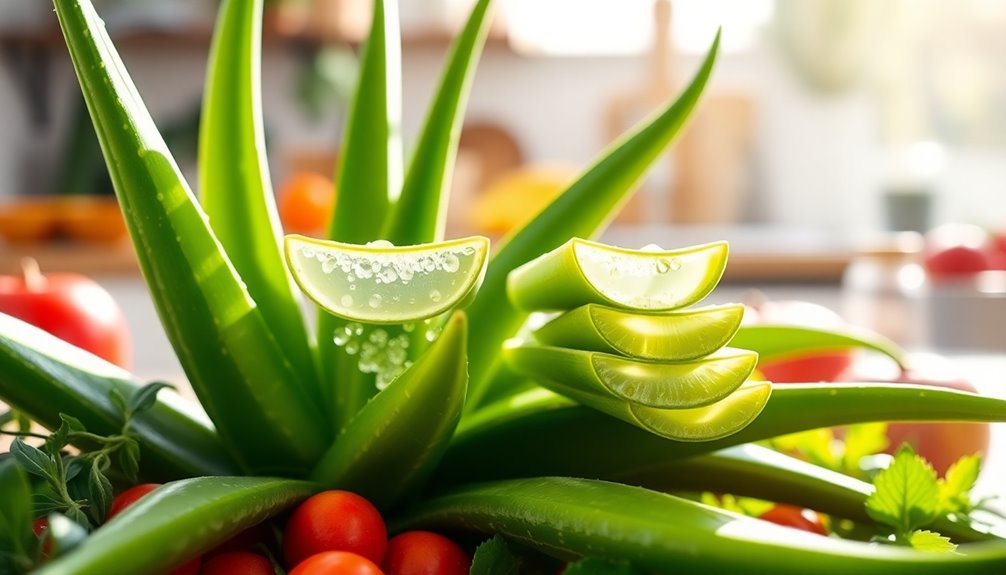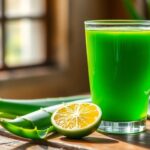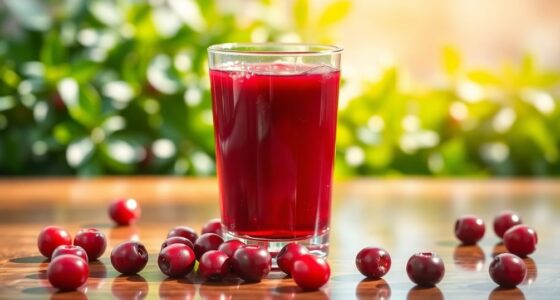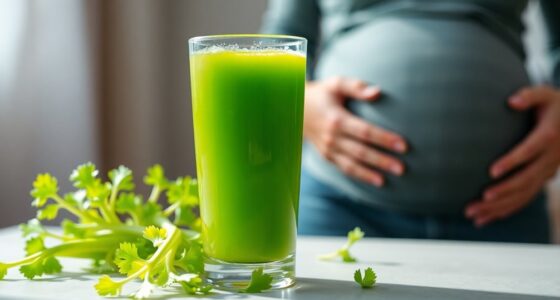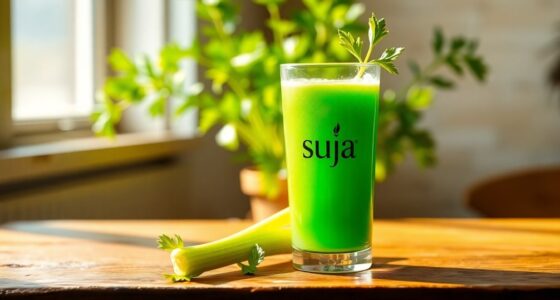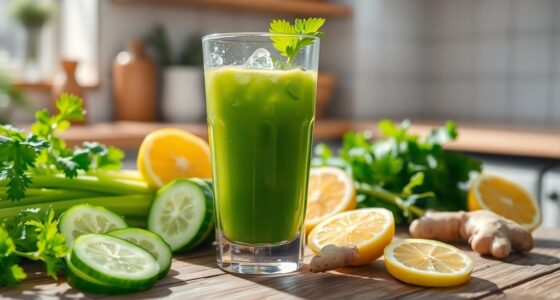Think aloe vera is just for skin? It's actually edible and packs a nutritious punch! With over 75 active ingredients, aloe vera can aid digestion and improve hydration. You can blend the inner gel into smoothies or salads for added health benefits. Just be sure to avoid the yellow sap and green parts. If you're curious about delicious recipes and tips to easily incorporate aloe vera into your meals, keep exploring this versatile ingredient!
Key Takeaways
- Aloe vera is not only for skin; it contains over 75 active ingredients that provide various health benefits when consumed.
- The inner gel of aloe vera is edible, while the yellow sap and green parts should be avoided for safety.
- It can be easily incorporated into smoothies, salads, or drinks for a nutritious boost and digestive health support.
- Aloe vera is low in calories and rich in vitamins and minerals, making it a healthy addition to your diet.
- Consult a healthcare professional before consuming aloe vera, especially if you have existing health conditions or are pregnant.
What Is Aloe Vera?
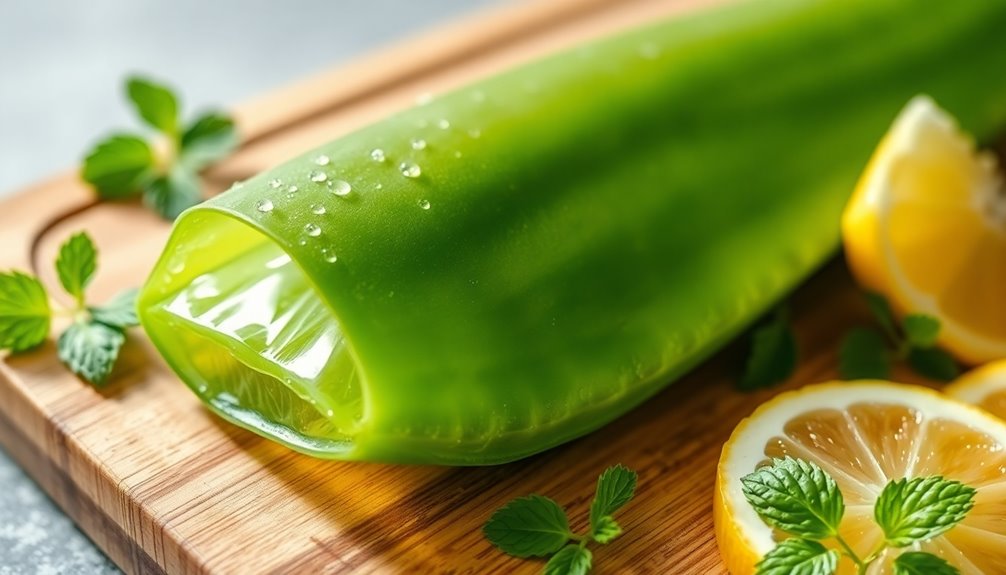
Aloe vera, a succulent plant scientifically known as Aloe vera barbadensis, is famous for its medicinal properties, especially in soothing skin irritations.
This remarkable plant contains over 75 active ingredients that contribute to its health benefits. You can enjoy aloe vera gel in various forms, like salads, smoothies, or drinks, but be cautious—never consume the yellow sap or green parts.
If you're looking for a low-calorie option, an 8-ounce serving of pure aloe vera juice has just 10 calories and provides essential nutrients such as calcium, potassium, and sodium.
Historically, the aloe vera plant has been valued for its healing properties, making it a versatile addition to both your beauty routine and your diet.
Nutritional Benefits of Aloe Vera
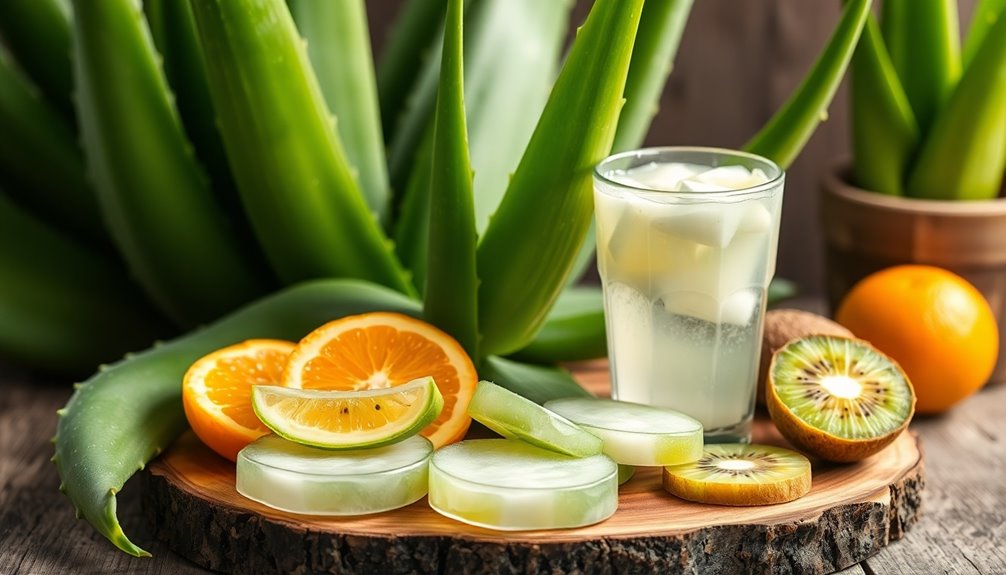
While you may know aloe vera for its soothing properties, its nutritional benefits are equally impressive. Drinking aloe vera juice can enhance your health and wellness thanks to its rich nutrient profile.
| Nutrient | Benefit |
|---|---|
| Calcium (74 mg) | Supports bone health |
| Potassium (110 mg) | Regulates blood pressure and muscle functions |
| Vitamins A, C, E, B12 | Contributes to overall health and wellness |
With only 10 calories per 8-ounce serving, aloe vera juice packs 2 grams of carbohydrates and 1 gram of fiber, promoting digestive health. Additionally, it may help lower blood sugar levels in individuals with Type 2 Diabetes, making this medicinal plant a valuable addition to your diet. Moreover, aloe vera's anti-inflammatory properties can complement natural pain relief efforts for various conditions.
Culinary Uses of Aloe Vera
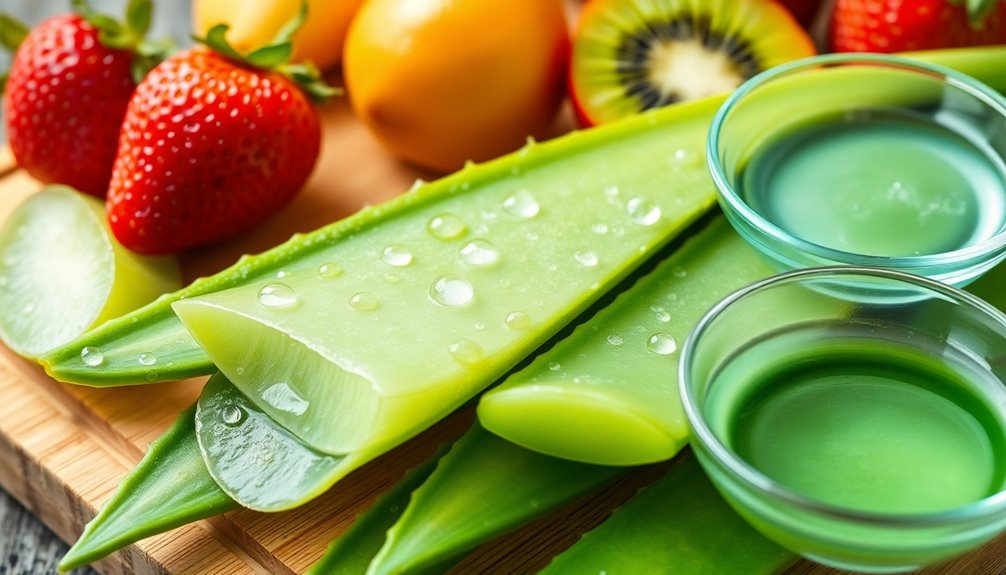
You can easily incorporate aloe vera into your meals for a revitalizing twist.
Try blending aloe vera gel into smoothies or salads for added nutrition and hydration.
Plus, making aloe vera juice with water and a splash of lemon juice not only tastes great but also offers digestive benefits.
Aloe Vera Juice Benefits
With just 10 calories in an 8-ounce serving, aloe vera juice is an invigorating and light addition to your diet. It's packed with benefits that can enhance your health and wellness. Regular consumption may help lower blood sugar levels, especially for those with type 2 diabetes. Additionally, aloe vera juice supports digestive health, easing heartburn and promoting gut wellness. Research suggests that aloe vera juice may also aid in digestive health by soothing gastrointestinal discomfort.
Here's a quick overview of its benefits:
| Benefits | Details |
|---|---|
| Calories | Only 10 calories per serving |
| Vitamins | A, C, E, and B12 |
| Digestive Health | Eases heartburn |
| Lower Blood Sugar | Helpful for type 2 diabetes |
| Medicinal Uses | Historical use for digestive issues |
Stick to the inner gel for safe consumption!
Cooking With Aloe Vera
Aloe vera isn't just for soothing sunburns; it can also elevate your culinary creations. You can consume aloe vera gel in various ways, such as adding it to salads, smoothies, or steeping it in water for a revitalizing drink.
Just remember to rinse off the yellow sap and avoid the green parts of the plant, as they can be bitter and harmful. An 8-ounce serving of pure aloe vera juice has only 10 calories and is a healthy addition to your diet, rich in potassium.
To amp up the flavor and health benefits, mix aloe vera gel with lemon juice in a tonic, aiding in detoxification and digestion. Just enjoy it in moderation to avoid potential adverse effects.
How to Prepare Aloe Vera for Consumption
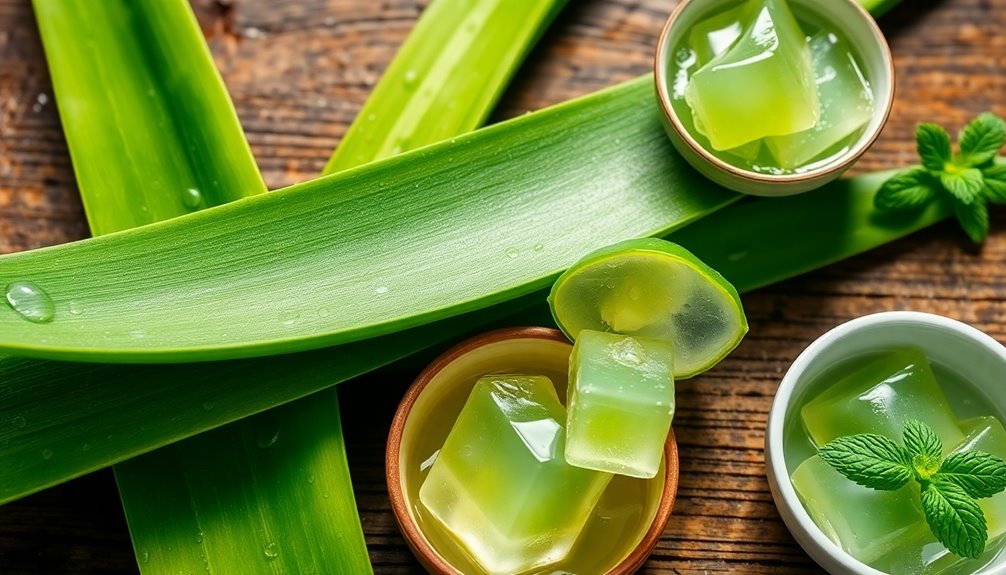
When preparing aloe vera for consumption, start by slicing open the leaf to access the inner gel.
Carefully remove any green parts or yellow sap, as these can be bitter and potentially harmful. Rinse the extracted aloe vera gel thoroughly to eliminate any residual sap.
You can use aloe vera in various ways: consume directly, mix it into salads, blend it into smoothies, or steep it in water for a revitalizing drink.
It's safe to eat, but it's wise to start with a small amount, about 1 to 2 tablespoons, to assess your tolerance.
Always consult with a healthcare professional before consuming aloe vera, especially if you're pregnant, breastfeeding, or have underlying health conditions.
Potential Health Benefits of Eating Aloe Vera
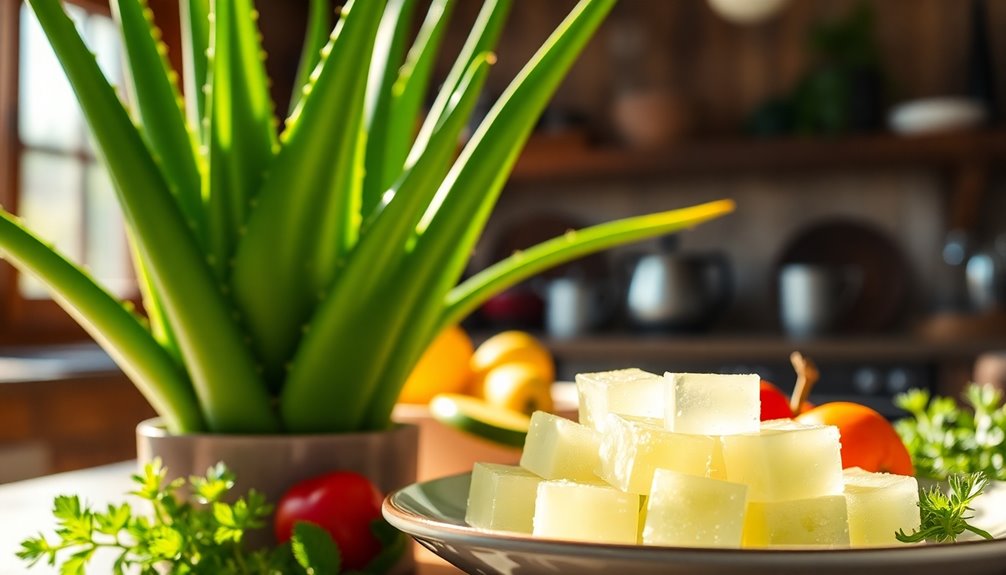
Eating aloe vera can offer various health benefits, thanks to its impressive nutritional value packed with vitamins and minerals.
You might find it particularly helpful for digestive health and even in managing blood sugar levels.
Incorporating aloe vera into your diet could be a simple way to support your overall well-being.
Nutritional Value Overview
Incorporating aloe vera into your diet can offer a range of nutritional benefits. Aloe vera gel is a low-calorie option, containing only 10 calories per 8-ounce serving, while being rich in vitamins A, C, E, and B12.
This nutrient-dense gel provides essential minerals like calcium, sodium, and potassium, which support overall health. Additionally, studies suggest that consuming aloe vera juice may help lower blood sugar levels for those with type 2 diabetes, making it a potentially beneficial addition to your routine.
Historically, aloe vera has been used to address digestive issues, promoting gastrointestinal health. Just remember to use only the gel from the inner leaf, as other parts can be toxic. Enjoy this edible plant for its nutritional value!
Digestive Health Support
Aloe vera can be a powerful ally for your digestive health, thanks to its unique combination of nutrients and enzymes.
Consuming aloe vera juice may provide several benefits, including:
- Relief from gastroesophageal reflux disease (GERD): It can soothe symptoms when you consume 1 to 3 ounces at mealtime.
- Natural laxative properties: While effective, be cautious with high doses of aloe latex.
- Vitamins and minerals: These nutrients support overall digestive health.
- Antibacterial properties: They help in maintaining a healthy gut environment.
Historical medicinal practices highlight aloe vera's role in promoting gut health, making it a valuable addition to your diet for soothing inflammation and enhancing digestive well-being.
Blood Sugar Regulation
Many people are turning to aloe vera for its potential to help regulate blood sugar levels.
Studies suggest that consuming two tablespoons of aloe vera juice daily may lower blood sugar levels in individuals with diabetes. The active compounds, like aloe emodin, could improve glycemic control, making aloe vera a promising addition to your diet if you're managing diabetes.
However, if you're on glucose-lowering medications, it's essential to be cautious, as aloe vera might lead to dangerously low blood sugar levels.
While ongoing research is needed, aloe vera is being explored as a natural adjunct treatment for diabetes, and it's also gentle on digestive health.
Incorporating it wisely may support your overall wellness journey.
Risks and Side Effects of Aloe Vera Consumption
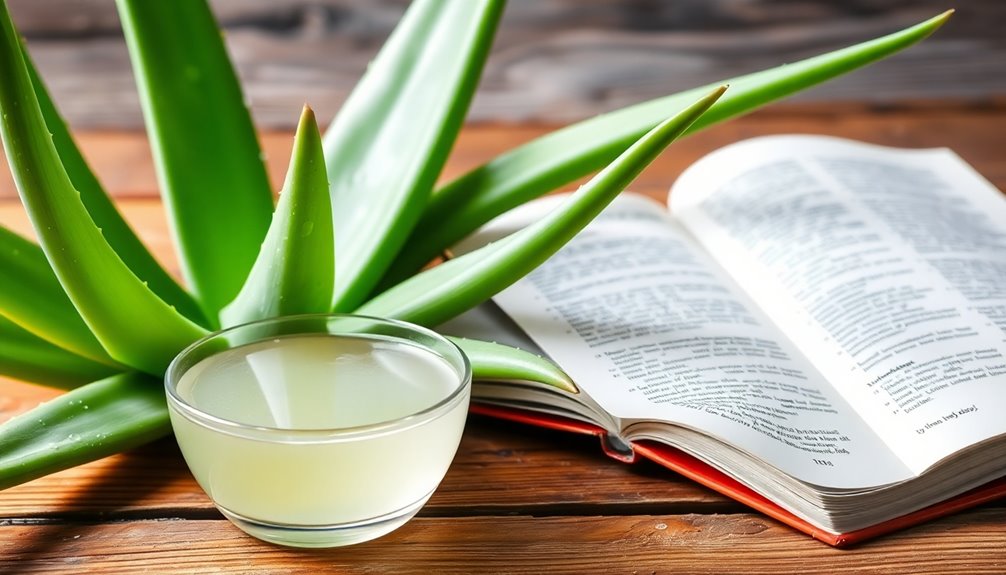
While some people enjoy the benefits of aloe vera, it’s crucial to be aware of the potential risks and side effects that can arise from its consumption. Here are some important points to keep in mind: Additionally, individuals with certain health conditions or those who are pregnant should consult a healthcare professional before using aloe vera, as it may interact with medications or exacerbate existing issues. Despite its popularity, the aloe vera health benefits revealed should be balanced with an understanding of the possible adverse reactions, such as gastrointestinal discomfort or allergic responses. Therefore, it’s essential to approach aloe vera consumption with caution and informed guidance.
- Common Side Effects: Cramps, diarrhea, and vomiting can occur, especially in high doses or sensitive individuals.
- Aloe Latex Risks: Avoid the outer leaf, as it can cause severe health issues like kidney damage and belly pain.
- Allergic Reactions: Increased sun sensitivity and allergic reactions may affect those with existing sensitivities.
- Precautions: Pregnant and breastfeeding women, as well as children under 12, should avoid aloe vera due to potential health risks.
Additionally, if you're on glucose-lowering medications, be cautious, as aloe vera may lower your glucose levels dangerously.
Delicious Recipes Featuring Aloe Vera
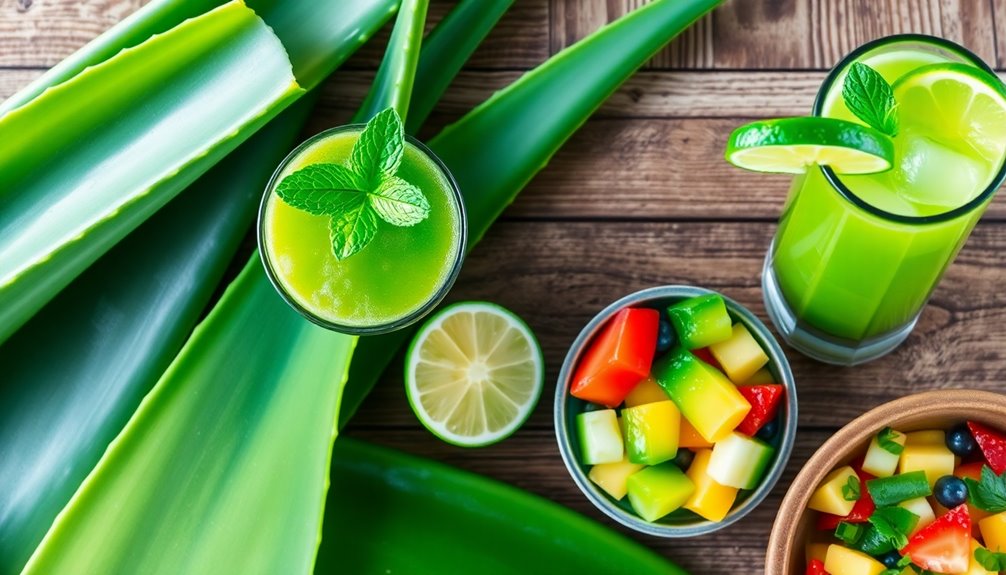
If you're looking to add a nutritious twist to your meals, incorporating aloe vera into your recipes can be both delicious and beneficial.
Try blending aloe vera gel into smoothies for a revitalizing boost that delivers hydration and nutrients with minimal calories.
Mix the gel with mango or cucumber in a salad for a light, nutritious dish that enhances digestion.
For a simple detoxifying drink, steep aloe vera gel in water with a few drops of lemon juice to support hydration and digestion.
You can also blend the gel into sauces or dressings, adding a unique texture while retaining its health benefits.
For a fun treat, freeze aloe vera gel in ice cube trays and add the cubes to your favorite beverages!
Tips for Incorporating Aloe Vera Into Your Diet
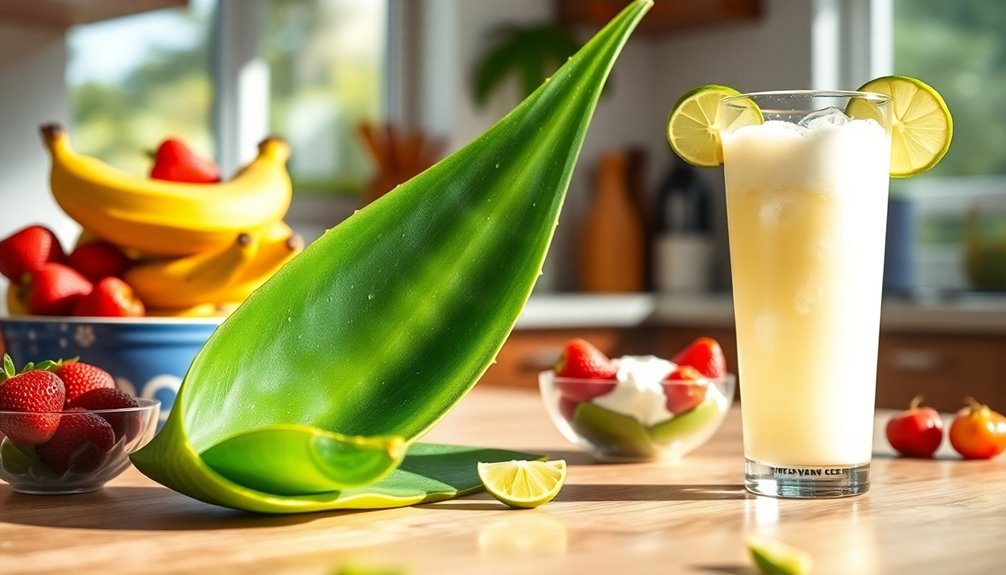
Incorporating aloe vera into your diet can be a straightforward and enjoyable process. Here are some tips to help you get started:
- Smoothies and Salads: Add aloe vera gel to your smoothies or salads for a nutritious boost packed with beneficial vitamins.
- Aloe Juice: Consume 1 to 3 ounces of aloe vera juice at mealtime to ease digestive issues like heartburn.
- Invigorating Drinks: Mix clear gel with water and a few drops of lemon juice to create an invigorating drink that aids in detoxification.
- Health Tonics: Use aloe vera gel as a natural ingredient in homemade health tonics, combining it with other ingredients for nourishing beverages.
With these tips, you can easily enjoy the benefits of aloe vera in your daily diet!
Frequently Asked Questions
How to Know if Aloe Vera Is Edible or Not?
To know if aloe vera is edible, focus on the clear inner gel.
Avoid the yellow sap and green parts, as they're not safe to eat. Always rinse the gel to remove any sap before using it.
For a tasty treat, incorporate the gel into smoothies, salads, or invigorating drinks.
Is It OK to Eat the Skin of Aloe Vera?
You can't judge a book by its cover, and the same goes for aloe vera.
It's not okay to eat the skin of aloe vera. The green skin can be bitter and may cause digestive issues, while the yellow sap, known as aloe latex, can be harmful if ingested.
Stick to the clear inner gel, which is safe and healthy. Always consult a healthcare professional before trying it, especially if you have health concerns.
What Happens if We Eat Aloe Vera Daily?
If you eat aloe vera daily, you might experience several health benefits. It can improve digestion and potentially relieve gastrointestinal issues.
Some studies suggest that two tablespoons of aloe vera juice can lower blood sugar levels, which is helpful for those with type 2 diabetes. You'll also get essential vitamins and minerals, promoting overall health.
However, be cautious, as excessive consumption may lead to digestive discomfort or other side effects.
Which Aloe Vera Is Edible for Humans?
Imagine discovering a hidden treasure in your garden; that's how you'll feel when you learn about Aloe vera barbadensis.
This variety is the one you can safely eat. Just remember, only the clear gel from the inner leaf is edible. The yellow sap and green outer leaf aren't safe and can upset your stomach.
Rinse the gel well to remove bitterness, and enjoy it in smoothies or revitalizing drinks for a nutritional boost!
Conclusion
So, don't just reserve aloe vera for your skin! With its nutritional benefits and culinary versatility, it can be a tasty addition to your diet. Imagine sipping a revitalizing aloe vera smoothie after a workout, helping you rehydrate and recover. Just remember to prepare it correctly and be mindful of any side effects. By incorporating aloe vera into your meals, you can enjoy its unique flavor while boosting your health. Go ahead, give it a try!
Cindy thoroughly researches juicing trends, techniques, and recipes to provide readers with practical advice and inspiration. Her writing style is accessible, engaging, and designed to make complex concepts easy to understand. Cindy’s dedication to promoting the advantages of juicing shines through her work, empowering readers to make positive changes in their lives through the simple act of juicing.

